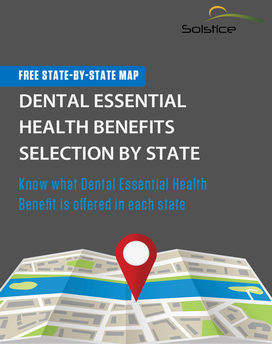By Carlos Ferrera on Nov 3, 2013 11:51:00 AM
A candid conversation with Solstices Ellen deClaire, Director of Human Resources
I'm sure you have read the forecasts, market predictions and statistics about health cares movement to state and federal exchanges. The preliminary enrollment data is starting to trickle in and there are about 100,000 people enrolled in products purchased from public exchanges. This number is grossly off from the projections.
So what do we do as business owners, brokers, insurance professionals, and those who are making benefit decisions for their organization? How can we make balanced, informed, sound choices regarding health care in this new landscape, especially when there is little data to guide, validate and substantiate our vetting process?
This is when I turn an ear toward the consumerin our case, our employees. I stop listening to the noise in the news and listen to those who are impacted the most. I sat down with our Director of HR, Ellen deClaire, to discuss the voice of the employee and the mindset of those making the ultimateand often difficultchoice for group benefits.
C: Do you think benefit enrollment in smaller groups will be affected by the emergence of exchanges?
E: In some cases, absolutely. Some employees will opt out of their employer sponsored benefits and go to the exchange because it will be more reasonably priced than their current benefits. In the small group market, they can age band the pricing of benefits so its possible that older employees could pay more, which would make them want to consider shopping on exchanges.
C: What about the Essential Health Benefits (EHB) provision; must employers now offer group benefits that include the EHB stipulations, such as pre-existing conditions?
E: Yes. Once its time for a groups open enrollment, the new plans that are offered cannot have a pre-existing conditions clause or lifetime max.
C: Rumor has it that an increased number of employers will try to renew in December so they can prolong including those EHBs in 2014,as well as avoid increased premiums. What do you see trending in the human resources field?
E: Thats a tough one. I think the decision to renew early as a cost-savings tool is really dependent on the organization. One that offers products on a voluntary basis or perhaps has a significant portion of its workforce eligible for subsidies on exchanges will view this through a different lens than a group that pays for 100 percent of insurance costs for its employees.
C: What steps should groups take to educate their employees about their benefits options?
E: Of course, offering cost-saving solutions and information is important. There will be an occasional employee who asks about dependent care and how to find a less expensive alternative. They can be advised to shop elsewhere, such as exchanges, to compare costs and benefits.
Education is important as well. At Solstice, we have created an internal training course on the Affordable Care Act. There is so much information out thereand so much misinformationthat we wanted our employees to know the facts. When they are faced with making benefit decisions, they will know the nuances of reform, what certain terminology means and feel confident making benefit decisions. Our goal is to demystify this very complex topic and empower our workforce with knowledge.
And of course, employer groups should be sending out their ACA-required notice to employees informing them of insurance options.
C: Based on what you hear and read in the news about wait times to shop on the exchange, the cost, the reported system glitches would you be apt to move your employees to public or private exchanges?
E: I would be more inclined to move to a private exchange. We have more control of the products, of the communication to our employees and ultimately, to their satisfaction with their benefits.
C: Has your broker increased contact with you since the implementation of the Affordable Care Act?
E: Yes. Ive been sent everything I need to keep me informed. I believe that our brokers are going to be a driving force in helping us navigate health reform. The more knowledge I receive, the more I will rely on them in the future.
C: What do you see as the future for health and ancillary benefits? What will you do in the long term as far as benefits are concerned?
E: We are shifting our benefits spotlight from medical-only to a big-picture approach. The data is evident: health is no longer just about medical concerns. Oral health impacts overall health from heart disease, to diabetes and more. Its no longer about just medical as so many aspects of ones health are impacted by areas not traditionally covered under medial.
Wellness, stress and nutrition tools help lower medical premiums and provide for a more engaged, happy workforce. We are broadening our scope of health. Our focus moving forward is on wellness and overall health. Its about focusing on the whole body, about a healthier lifestyle overall.
Times are changing with uncertainty ahead. Employer groups will want to continue to be involved in their employees benefits After all, thats one of the key ways to recruit the best talent and retain employees. Private exchanges provide cost-savings coupled with a positive online shopping experience and I expect to see more and more groups moving in that direction. Full suite offerings that include wellness, ancillary benefits and medical together will be the next generation of employer benefits.. And, we look forward to that. Because when it comes to health, we really shouldnt separate out each aspect of the benefits we offeror leave any out altogether. They are all interconnected, and critical for the well-being of our workforce.
Any questions about your current Solstice products? Login to your portal on https://www.solsticemarketplace.com/
Want to start selling Solstice? Give us a call at 877-760-2247 or email us at sales@solsticebenefits.com





comments